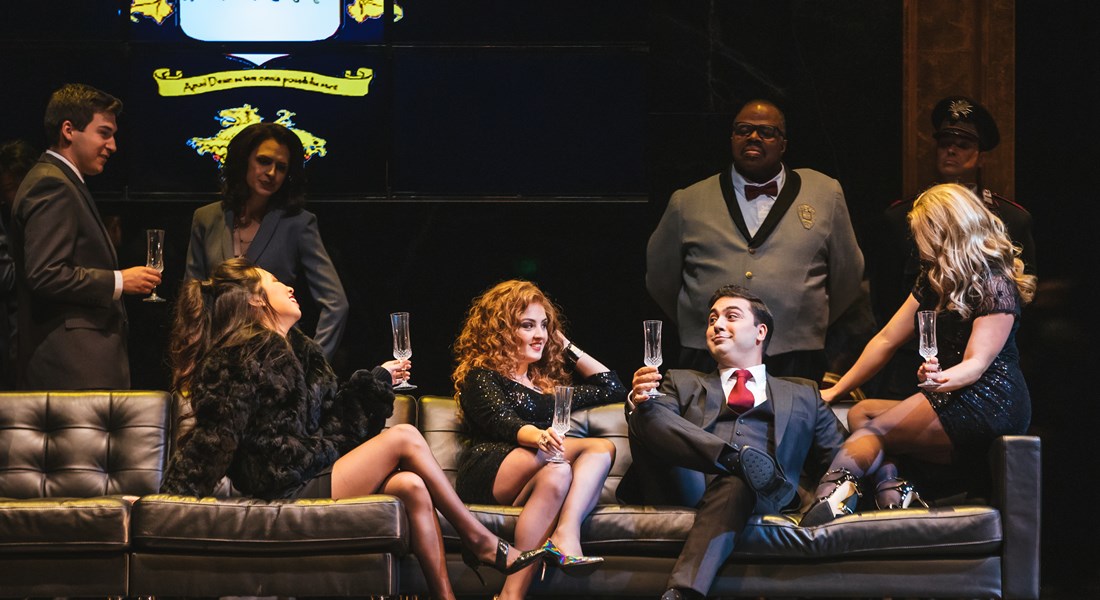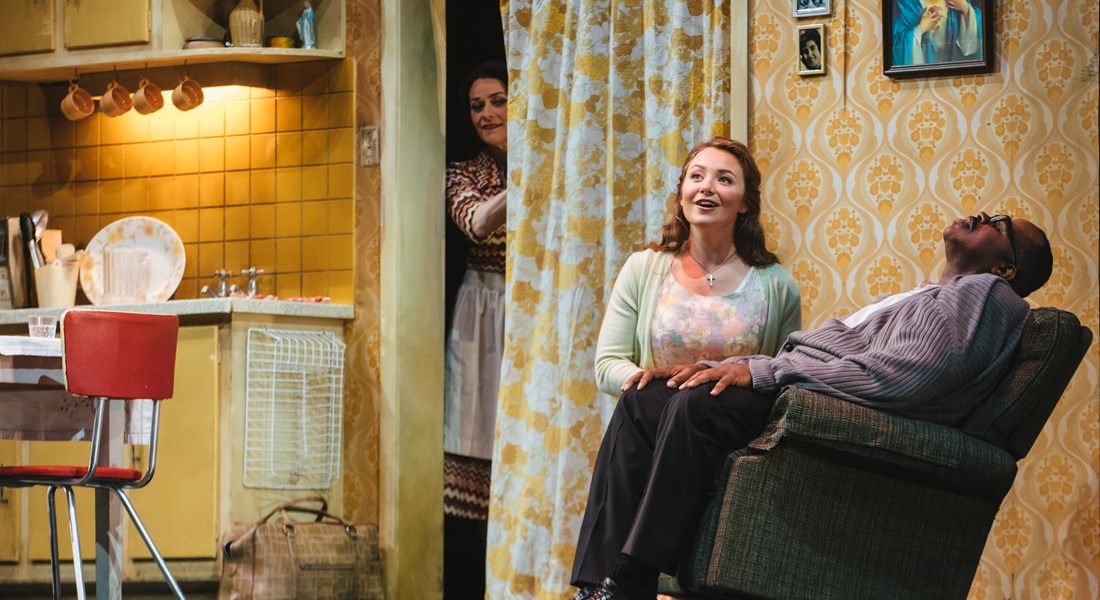Posted21 Apr 2022
- In
Program Note: Re-Examining Rigoletto
Violence against women is so common in opera it has become predictable: you see an opera with a woman and, unless it’s a comedy, you know something bad is going to happen to her. A woman is blackmailed into sex against her wishes by a corrupt cop (Tosca). A woman kills herself after being sexually coerced as a teenager (Madame Butterfly). A woman is forced into sex by an abusive ex (Porgy and Bess). A group of women are executed, one after another, in holy procession (Dialogues of the Carmelites). A woman is shot by a jealous ex (Carmen). A woman is stabbed by a jealous husband (Pagliacci). Again, a woman is stabbed by a jealous husband (Wozzeck). A woman is stabbed (Lulu). A woman is stabbed (Rigoletto).
This prevalence of violence against women, and our expectation as an opera audience of it, demands discussion. In many ways, what we see onstage reflects the violence of a patriarchal society, both as it was when the opera was written and as it is now in how the story is presented for modern audiences.

With the rise of feminism came a rise in discussion about this theme. In 1979, philosopher Catherine Clément’s “Opera, or the Undoing of Women,” which addressed violence in plots, was published in French, with an English translation a decade later. This was followed by musicologist Susan McClary’s “Feminine Endings” in 1991, which tackled the theoretical side of the discussion.
The conversation on the prevalence of sexual violence in opera was sparked again in recent years with the #MeToo movement. While there has been a reckoning of real-life individuals, we have also begun to reckon with these fictional characters. What do we do with Don Giovanni, anyways? Is it enough that he gets dragged to hell at the end? And hey, is he a serial rapist or just a charming guy – and how much of a difference is there between the two?
These are questions prompted, too, by Rigoletto, which tells the story of a young woman (unless she’s really a girl) confined in an obviously threatening, patriarchal society by a father (who’s either brutally overbearing or rightly protective) facing off with a man (who’s either stricken in fleeting love or seeking a vicious conquest). What might seem like a basic question of whether Gilda is seduced or raped over the course of the opera can be endlessly argued; just ask scholar Elizabeth Hudson, she wrote a 24-page paper about it.

These are not easy questions to answer, and in some cases, these are not easy questions to ask, discuss, or even think about. But, says Monica Hershberger, Assistant Professor of Music at SUNY Geneseo, “I do think that there's something really valuable about trying to wrestle with that discomfort.” By not shying away from the fact of gender-based violence, opera gives us an opportunity to grapple with these ideas.
Many have argued violence against women in opera does not condone it, but rather demonstrates the negative impact of a sexist world and how it ultimately hurts everyone involved, even if they were, for example, just trying to be a good father. (When Rigoletto cries out about the “curse,” is this reflecting the curse was real, or is this him refusing his own culpability in the tragedy?) McClary, in her 1991 collection, argues that Carmen, the most famous example of domestic violence in opera, can be viewed as “a bitter critique of European patriarchal forms of gender construction.”
Even with that view, though, she writes, it “must never be forgotten or minimized” that Carmen is, after all, killed. We might now have the language to describe the Duke’s sexism, but violence against women persists. About one in four American women have experienced sexual violence, physical violence, and/or stalking by an intimate partner, according to the CDC. There are real stakes and consequences; that’s what makes it important that we talk about it, instead of pretending it’s just another trope. To continue moving forward, modern opera participants can’t ignore the discomfort of watching 19th century norms in the 21st century, even if we still walk out of the theater whistling “La donna è mobile.”
The Rape, Abuse & Incest National Network (RAINN) suggests keeping this in mind while watching depictions of sexual violence as a survivor: 1. You are in control of what you watch and don’t have to watch anything you don’t want to. 2. Pay attention to content warnings. 3. “Remember, this isn’t the whole story,” as dramas often leave out how survivors heal.
Alexandra Svokos is the senior editor of digital at ABC News and an MBA candidate at NYU Stern. She fell in love with opera at age 15 with a performance of Lucia di Lammermoor (a woman has an understandable reaction to marital rape).
Leave your comment below.

 Facebook
Facebook Twitter
Twitter More
More